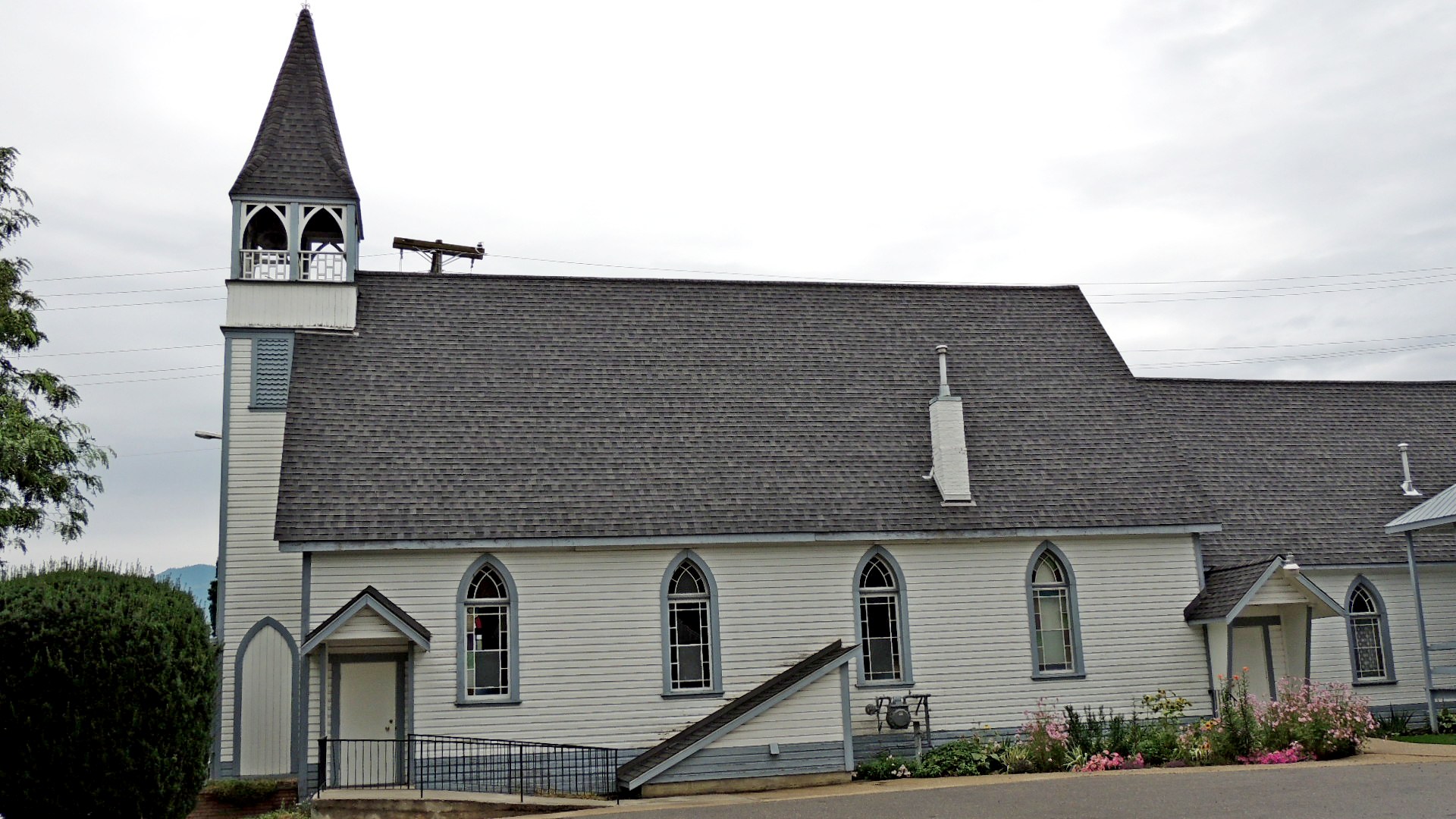|
 Zion United Church - Armstrong, BC Posted by:  T0SHEA T0SHEA
N 50° 26.897 W 119° 11.376
11U E 344548 N 5590765
Initially a Presbyterian church, this wood frame building was the second church built in the town of Armstrong, with services being held for the first time on January 2nd, 1902. In 1925, with Canada wide church union, it became a United Church.
Waymark Code: WMMBQ3
Location: British Columbia, Canada
Date Posted: 08/27/2014
Views: 3
Zion United Church
2315 Pleasant Valley Boulevard
Description of Historic Place
Zion United Church is an end-gabled, gothic style building. It has a coursed stone foundation and drop siding with wooden trim. The exterior is white shiplap with grey trim. There are vertical comer boards at the edges. The church contains gothic style stained glass windows. there are two windows on the façade and four on each of the east and west sides of the building. the south side contains a wooden circular "wagon-wheel" pattern.
Heritage Value
The first Presbyterian Minister in this area was Reverend J.A. Jaffray who came in 1886. A.L. Fortune and Donald Matheson were the first elders. Rev. Jaffray would travel throughout the area conducting services. In Lansdowne services were held in a public hall. When the S & O Railway came through Armstrong the hall was moved into town.
In 1901 the building at the end of Pleasant Valley Boulevard was constructed as Zion Presbyterian Church. The Presbyterians had been sharing building with the Methodist congregation since 1892. The Methodist church was located app. at 2516 Patterson. Later on was sold and moved to Rosedale Avenue, two houses in from the highway.
The comer stone of the church was laid by Mr. A.L. Fortune, who was clerk of the session at that time. A silver trowel was presented to Mr. Fortune at this time and has been passed down from clerk to clerk as a memorial to the building ever since.
The first proposal for church union, on a national scale, came in 1902. Negotiations began in 1904. Union was to be between the Methodists, Presbyterians, and Congregationalists. The Anglican and Baptist denomination were invited to join in the process, but both declined. The basis for church union was completed in 1908. There was much opposition to be found in the Presbyterian Church of Canada. Locally, the Presbyterian congregation held two separate votes to decide whether or not to proceed. Both of the votes came out in favor of union. On June 7, 1925 a joint service was held between the Presbyterian and Methodist congregations. On Wednesday June 10, 1925 a special service was held to mark the actual commencement of church union. The next Sunday, June 14, 1925, the first regular United Church service was held. The church building on the corner of Pleasant Valley Boulevard and Mill street became known as Zion United Church.
There was a small group of approximately 25 families from the Presbyterian Church that still resisted the move to the United Church. This group of dissidents was lead by four elders: Dr. K.B. McKechnie, Mr. J.H. Wilson, Mr. D.S. Long, and Rev. Wesley Akitt. Other influential members of the congregation including T.K. Smith and his brother Bill were also members of the dissident group. The remaining Presbyterians were paid $1000 for the loss of their building. They met in the Foresters Hall, now the Odd Fellows Hall, for three years before moving to their present building on the comer of Wright Street and Wolfenden Terrace in 1928.
The church has had a back lounge area added on the main area. A separate church hall has also been built to the west of the original building. The entrance has been changed so that the doors open to the front. The outline of the old side entrance doors, which have been boarded up, can still be seen. Some more modern additions to the building include the open front porch, the two-leaved doors, the planters along the steps, and the wheelchair ramp.
From the Armstrong Heritage Register

Type of Marker: Cultural

Type of Sign: Historic Site or Building Marker

Describe the parking that is available nearby: Street parking

What Agency placed the marker?: City of Armstrong

|
Visit Instructions:
When entering a new log for visiting a waymark please provide a picture of your visit to the location and if you have an interesting alternate area or sign photo include that.
Please include any thoughts or historic information about the area that the marker may represent.
Recent Visits/Logs:
| There are no logs for this waymark yet. |
|
|
|
|